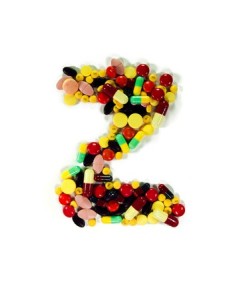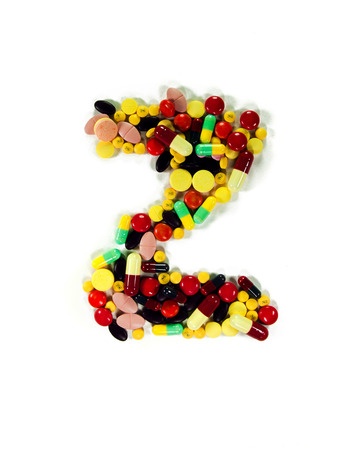
“Frigatebird” glanced at the pillows next to him on the couch and started laughing hysterically because they were alive. “They had arms and legs and were married.” He didn’t really believe this; he knew it was a hallucination, but could see the pillows talking to one another. When he looked at his friend, Andy had four noses drifting around his face, gently waving “like a sea anemone waves in the current.” Someone named “Hyper Jesus” said she didn’t expect to psychically alter the physical makeup of her ceiling, have a lengthy discussion with a plastic bag, or have her bed turn into a planet inhabited by ants who thought she was a god. “Needless to say, I was surprised when all of that happened.” These were the reported experiences of individuals who took Ambien, the popular sleep aide medication.
In Medication Madness, Peter Breggin wrote that although Ambien has a different chemical structure than benzodiazepines, it affects the same neurotransmitter system. And it produces similar effects, including abnormal behaviors and addiction. Read “Downward Spiral” for a description of Ambien-related addiction and abnormal behavior in a 24 year-old Australian man. “Frigatebird’s” complete story (“Powerful Imagination Enhancer”) and that of “Hyper Jesus” (“Lilith and the Shadow People”) can also be read on Erowid, a pro drug website.
Dr. Breggin commented that the Ambien CR label described how patients in brief three-week trials developed hallucinations, disorientation, anxiety, depression, mental and physical slowing, depersonalization, disinhibition, euphoric mood, and mood swings. He added there was a special concerns section that also indicated the possibility of memory problems, tolerance, dependence and withdrawal. All of the above are related in the three stories noted above.
Given these concerns, it shouldn’t be surprising that zolpidem, the generic form of Ambien, was found by the CDC to be the most frequently identified psychiatric drug as the reason for emergency room visits. Not surprisingly, zolpidem was the 19th most frequently prescribed medication in 2013, with 41.5 million prescriptions.
Twenty-five percent of these visits required hospital admission, according to Quarter Watch. It seems that the problems were the result of a pattern of unsafe use—using higher doses than recommended and using it for a longer period of time than recommended. According to Quarter Watch, “Zolpidem is recommended for short term use, based on pivotal efficacy trials of 21-37 days. We found 68% of zolpidem patients were sustained users, with 3 or more prescriptions/refills and a mean of 229 days supply.”
A 2013 DAWN report by SAMHSA said that in 2010, there were 64,174 ER visits involving zolpidem. Thirty percent of them (19,487) were attributed to adverse reactions—adverse health consequences resulting from taking zolpidem. An ER visit was not included if an illicit drug was involved. The number of adverse reactions from zolpidem rose nearly 220% from those reported in 2005. Patients 65 and over represented the largest percentage of zolpidem-related ER visits involving adverse reactions (32%), followed by patients aged 45 to 54 (22%) and those aged 55 to 64 (20%).
Forty percent of these adverse reactions were from the person only taking zolpidem; 50% involved other pharmaceuticals: 21% from narcotic pain relievers; 14% from benzdiazepines; 19% from antidepressants; and 8% from antipsychotics. “In one tenth (1,970 visits, or 10 percent) of visits, alcohol was the only substance combined with zolpidem.” See Table 1 in the 2013 DAWN Report for further data on additional drug combinations.
A 2014 DAWN report by SAMHSA reported that one third of the 20,793 ER visits in 2010 involving zolpidem were for overmedication—when a patient exceeds the prescribed or recommended dose. These overmedication visits may have involved other medications, but excludes visits involving drug-related suicide attempts and the use of prescription medications not prescribed to the person. The number of ER visits involving overmedication of zolpidem rose 107% from 21,824 in 2005-2006 to 42,274 in 2009-2010.
Thirty seven percent of ER visits were for overmedication of only zolpidem; 57% involved other pharmaceuticals: 25% from narcotic pain relievers; 26% from benzodiazepines; 19% from antidepressants; and 14% from antipsychotics. “About 13 percent involved alcohol combined with zolpidem.”
Researchers previously found that use of zolpidem in combination with other pharmaceuticals or alcohol was associated with increased likelihood of being admitted or transferred to the ICU.Findings in this report show that almost half of zolpidem-related ED visits involving overmedication resulted in hospital admission or transfer. More than two thirds of ED visits that resulted in hospital admission or transfer involved other pharmaceuticals, mostly other CNS depressant medications. CNS depression is the result of decreased brain activity, which may be caused by taking one or several CNS depressant medications and/or alcohol in combination that may then have cumulative depressant effects on the brain.These depressant effects include a decreased breathing rate, decreased heart rate, and loss of consciousness, possibly leading to coma or death.
While the previously reported adverse reactions were more common among older age groups, overmedication ER visits were more evenly distributed across all age groups. While 31% of patients aged 45 to 54 had the largest proportion of zolpidem-related ER visits involving overmedication, only 11% of those patients were 65 and older and 14% of those were between 55 and 64.
Besides Ambien, some other non-benzodiazepine sleep aides approved by the FDA are: Lunesta (eszopicione) and Sonata (zalepion). All three have a risk of dependency. All three carry warnings of possible sleep-related activities, such as: sleep-walking, sleep-driving, making and eating food, talking on the phone, having sex. “The next morning, you may not remember that you did anything during the night.” And they have similar serious side effects: sleep-related activities, abnormal thoughts and behaviors (more outgoing or aggressive behavior than normal, confusion, agitation, hallucinations worsening of depression, suicidal thoughts or actions), memory loss, and anxiety. The links for each of these three Z-drugs are to the FDA approved medications guides. And there are descriptions of individuals with psychoactive “experiences” with Lunesta and Sonata on Erowid as well.
Benzodiazepines and z-drugs are both Schedule IV controlled substances (they have the same addictive potential). Another similarity is that they are commonly used on a long-term basis instead of the recommended short-term basis. The long-term use of z-drugs and the resulting increased tolerance contribute to the problems discussed above with Ambien, adverse drug events and overmedication. Tolerance builds up with regular use, requiring more of the z-drug to get to sleep. I’ve known where a second medication was added; sometimes the off label use of antipsychotics. This brings in another whole set of potential side effects and adverse drug events.
A study published in the British Medical Journal on the effectiveness of so-called z-drugs (non-benzodiazepine hypnotics, like Ambien, Lunesta and Sonata) found that both the drug effect and the placebo response were “small and of questionable clinical importance.” But when the two were put together, there was a reasonably large clinical effect.
These data suggest that the placebo response is a major contributor to the effectiveness of Z drugs. The remaining effect needs to be balanced against the harms associated with these drugs. The substantial proportion of the drug response accounted for by the placebo response indicates the importance of non-specific factors in the treatment of insomnia. As the placebo effect is a psychological phenomenon, these data suggest that increased attention should be directed at psychological interventions for insomnia.
If individuals aren’t informed of the dangers of mixing z-drugs and other medications like opioids, antidepressants and benzodiazepines, they are an adverse drug event waiting to happen. Because of the physical tolerance that can develop, rebound insomnia is likely if the medications are tapered too quickly. It may even occur with a gradual taper in some people. And then to top it all off, the z-drug effect was small and of questionable clinical importance. But on the other hand—maybe your pillow will dance; or you’ll become a god to nonexistent ants crawling around on your bed. Pleasant Dreams!





